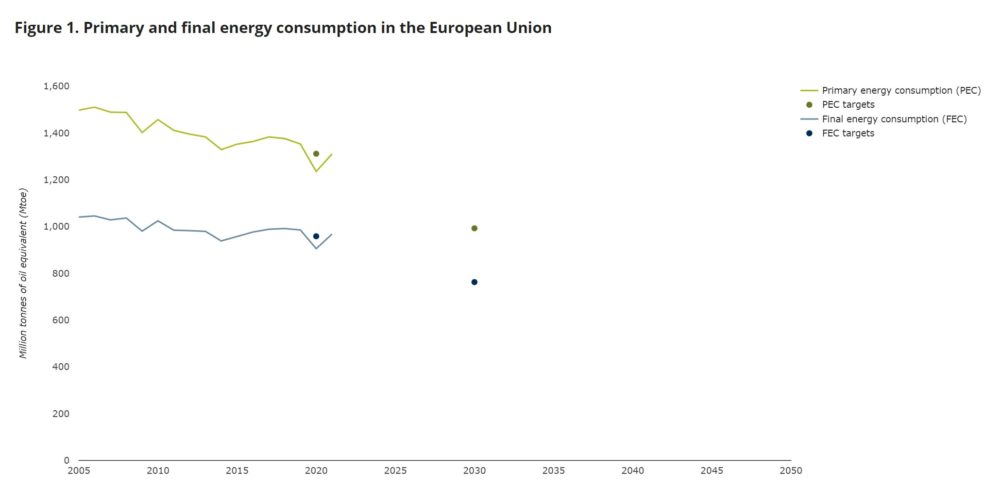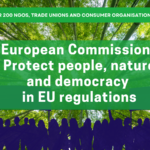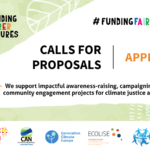Next week, Members of the European Parliament will sit down to adopt the agreed Energy Efficiency Directive and overall EU Energy Efficiency Target for 2030. This has important implications for Europe’s energy transition and how it will stay on track to meet the Paris Agreement´s goal of limiting global temperature rise to 1.5°C.
Saving Europe’s energy
The Energy Efficiency Directive (EED) is key when it comes to reducing the EU’s energy consumption as it sets the overall energy efficiency target for the EU to achieve by 2030. It is a part of the EU Green Deal, the Fit for 55 Package and the REPowerEU plan. These all have the goal of reducing the EU’s dependence on fossil fuels, while also lowering greenhouse gas emissions to mitigate the climate crisis. Yet, the level of ambition needed in the EED for the EU to stay on track to reach the Paris Agreement goal of limiting global temperature rise by 1.5°C is not reflected by EU and national policymakers’ agreement on the directive. An agreed EU 2030 energy efficiency target of 11.7% was reached by policymakers, despite the science indicating that a target of at least 20% is needed to keep the EU on track with the Paris Agreement.
It now falls into the hands of national governments to overshoot this disappointing energy efficiency target of 11.7%. Doing so will move the EU closer to reaching its climate commitments while also enhancing its energy security and reducing energy costs across households and in different sectors.
This is where the National Energy and Climate Plans (NECPs) come in. All Member States must submit NECPs updates to detail how they will achieve the EU’s 2030 climate and energy targets, including those on energy savings. They are vital in accelerating the EU’s energy transition and pushing for climate action and an opportunity for Member States to exceed the less ambitious EU targets for energy savings. Europe can no longer afford delays and needs to make up for its slow progress on energy efficiency and energy savings in the past. Member States should set ambitious national contributions for both primary and final energy consumption in their updated NECPs that put Europe on track to reach a target of at least 20% in energy savings by 2030.
The collective ambition gap
In the current NECPs, policy makers in Member States did not take energy savings seriously. The Commission concluded that the sum of national contributions to the indicative 2030 energy efficiency target falls short in reaching its minimum requirement. Instead there is a collective gap of 2,8% for primary (the total energy demand, including transformation and distribution losses) and 3.1% for final total energy consumption (the energy used by the final user). Member States need to learn from old mistakes and make sure to not leave a gap.
The high energy prices and the urgency of the climate crises are stark reminders of why Member States need to pick up the pace on increasing energy savings and set things right in the NECPs update.
A new legal obligation
The tide has turned for energy savings. What changes with the new agreement for the Energy Efficiency Directive is not only the fact that the 2030 energy efficiency target will be binding for final energy consumption. A clear formula helps Member States to calculate the exact benchmark for national contributions to comply with the target for both final and primary energy consumption. If all Member States pledge in line with the formula, national contributions sum up to the level of the new EU energy efficiency target.
However, this won’t be enough to keep Europe on track to reach its obligations under the Paris Agreement. Instead of only ticking the box in the NECPs planning exercise, Member States have to speed up an energy transition to a fully renewable energy system that puts energy savings at its core. Countries need to notify robust policies and measures to achieve their national 2030 energy efficiency contributions in their NECPs updates. A linear trajectory to decrease energy consumption can help make sure that not everything is done last minute and Europe gets on the right track quickly.
In contrast, a business-as-usual scenario or keeping efforts till the last minute will not get us there. Energy consumption experienced a big drop in 2020 and the EU was able to fulfil its promises on both the EU energy efficiency and renewable energy target. However, the latest European Court of Auditor report states:without the COVID-19 pandemic, the 27 EU Member States would most likely not have reached their 2020 energy targets. The European Environmental Agency (EEA) latest provisional data shows (see for Figure 1) that Europe is falling off the track for energy savings. In 2021, with the economic recovery and lifting of restrictions, energy consumption is shown to be even slightly higher than the 2020 target, bringing Europe back to square one.

Source: The European Environmental Agency, 2023
According to the EEA, Member States need to do seven times as much for the period 2021-2030. Therefore the EU will not meet its 2030 target unless a major and rapid transformation of the energy sector happens during this decade.
Boost energy savings and live up to the Paris Agreement
Member States need to go beyond the minimum requirements and boost energy savings in their NECPs. Countries should:
-> Include a national 2030 energy efficiency contribution, both for primary and final energy consumption, in line with the Paris Agreement
-> Set out and describe planned policies, measures and programmes to achieve the higher contributions
-> Notify a linear trajectory for decreasing energy consumption to achieve the national energy efficiency contribution
Written by Verena Bax, Energy Savings Policy Expert at CAN Europe



